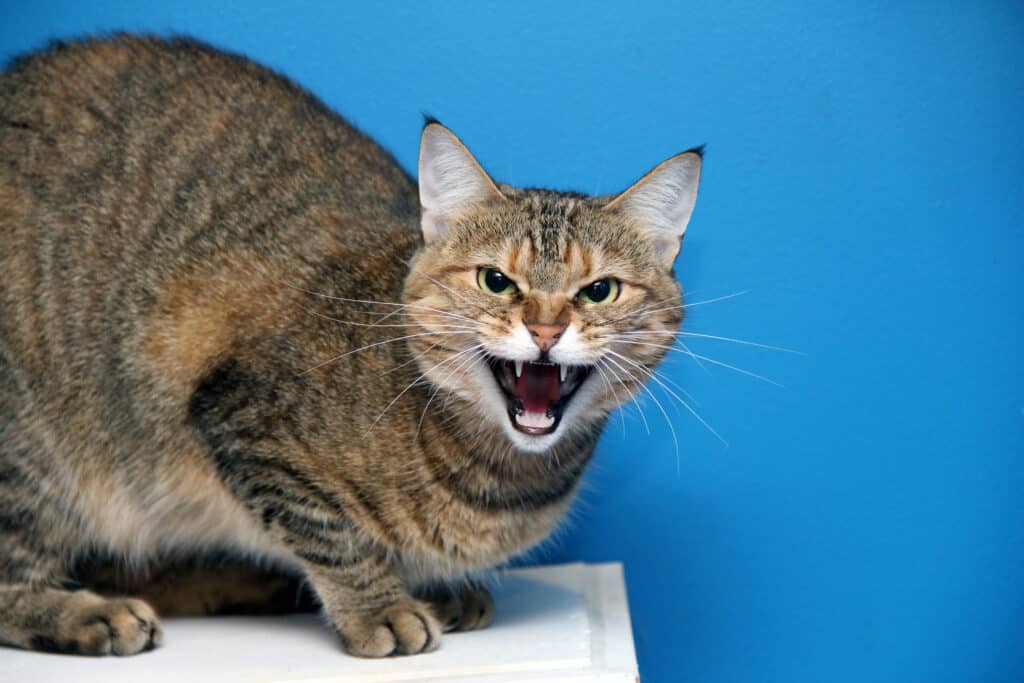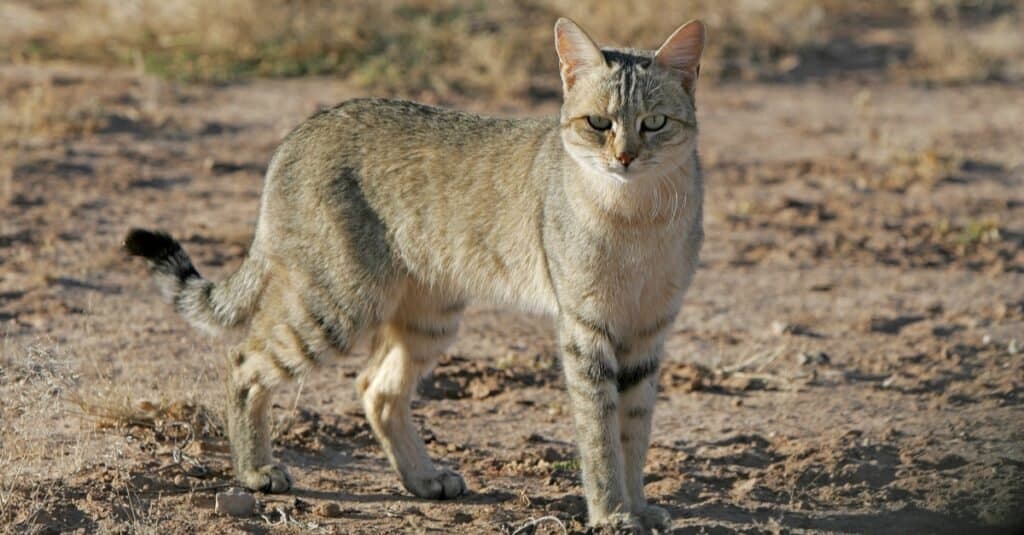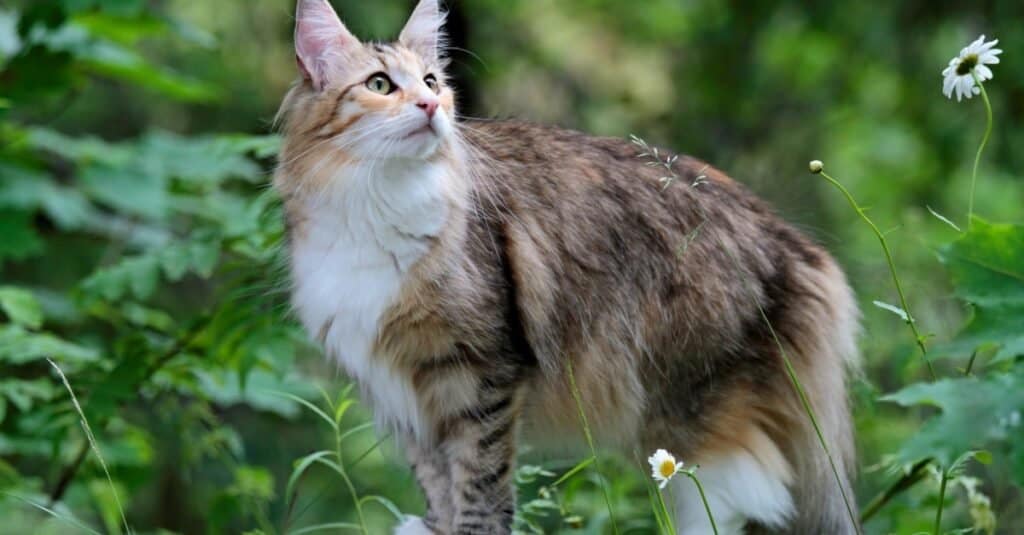The criteria needed to add an animal to Poland’s invasive species list are “100% met by the cat,” said biologist Wojciech Solarz.
Housecats, or Felis catus, are now the 1,787th animal added to Poland’s invasive species list, although this is the first time there’s been such an uproar. People were not happy when they heard the news.
Polish cat owners were a little uncertain about what this new designation meant, with many jumping to the idea that cats were no longer welcome in the country. Fortunately, this was not true.
Most countries do their best to oust invasive species in attempts to reclaim the natural order of their ecosystems. In the case of the cat, however, this isn’t the goal. The idea is to simply spread awareness, possibly setting some restrictions that could help prevent cats from disrupting the ecosystem.
Let’s take a step back, though. How in the world can our furry little feline friends be bad for our environments? What is an alien invasive species, anyway?

Poland pronounced housecats to be an invasive species because of the harm that they wreak upon wildlife, primarily birds.
©Anastasia Tveretinova/Shutterstock.com
The Definition of “Invasive Species”
According to the National Ocean Service, an invasive species is an organism that “causes ecological or economic harm in a new environment where it is not native.”
Generally speaking, native animals go about their business in a reliable way that maintains the equilibrium of the environment. These animals evolved in their local habitats, and each aspect of an evolving habitat leans upon, and balances itself against, the other factors in its immediate world.
The result is that native species don’t cause much of a stir unless something drastic happens (disease, overpopulation, shifts in climate, etc.).
When a new species enters an environment, its liable to totally upend the local ecosystem. No matter how small a species is, its introduction to a new array of species poses a real threat.
The Risks of Invasive Species
Let’s use the black rat (house rat) as an example. Rats are incredibly capable and adaptable. They probably originated somewhere in Southeast Asia and hitched a ride over to Europe at some point during Rome’s conquests. Then, they spread throughout Europe with ease, adapting as they needed to.
Black rats have the special ability to carry a wealth of diseases in their blood without being especially affected by them. So, a diseased rat might be resilient enough to go about its business in the same way that a healthy rat would.
This fact, coupled with their exceptional ability to multiply and spread, contributed heftily to the outbreak of the Black Death. The Black Death, also known as the Bubonic Plague, killed anywhere from 75 million to 200 million people. Clearly, that’s a problem.
Other invasive species might enter an ecosystem and find that there are no natural predators there. There aren’t any competing species to keep the invasive species in check, allowing it to multiply and devastate the food sources in its path.
This ripples outward in different ways, depending on the invasive species in question. Invasive plants might crowd the soil, preventing native plants from growing. That prevents local herbivores from having any food sources, and the carnivores higher up the chain are starved out as well. If you throw a wrench in the circle of life at any stage, all other stages will be affected on some level.
But what about cats, specifically?

The African wildcat, which is native to northern Africa, is the ancestor of today’s housecats.
©Erwin Niemand/Shutterstock.com
The Housecat’s Journey
The common housecat is believed to be descended from the North African wildcat. This was a cat that might have lived in North Africa and areas of the Middle East around 10,000 years ago.
Our relationship with cats formed naturally. We started farming and storing grain. Stored grain was of particular interest to mice and rats, which could enter the stores and spread disease.
If disease spreads through a community’s grain storage, that community might suffer greatly with the loss of food, loss of life, and a lack of knowledge on how to treat the disease in question.
North African wildcats feed mostly on rodents and birds. So, as the rodents traveled to human-harvested grain stores, so too did the wildcats. The wildcats ate the rodents, the rodents didn’t spread disease, and humans were eternally thankful for the wildcats.
Wildcats were likely happy with us, too, as they would have associated us with an ever-abundant source of food. In light of this perfect partnership, humans would have started domesticating these animals around that time, breeding them selectively for favorable traits.
10,000 years later, we’re left with cuter, cuddlier versions of the wildcats of old. Pet-shaped as they may be, our cats still retain their dominant instincts.
Why Housecats Are a Problem
Cats now exist literally everywhere but Antarctica. Before we get to the heavy-hitting statistics, think of any cat you’ve ever played with.
Did you dangle a little stuffed-thingy on a string and hope the cat would jump high in the air to grab it, narrowly missing so you’d have the chance to go through the whole routine again? Of course that’s what you did because it’s really fun to play with cats that way.
It’s also impressive to see them jump four feet in the air and actually catch the thing that you, a big-brained human, were trying to keep away from them.
Well, the reason cats are so good at catching those toys is that they are essentially birds. It turns out that indoor/outdoor cats and stray cats are incredibly good at catching actual birds.
In the United States alone, it’s estimated that cats catch and kill something to the tune of one to four billion birds each year.
B-i-l-l-i-o-n. That number is some two to 10 times higher for small mammals, too. Cats do a number on birds, reptiles, and small mammals wherever in the world they might be.
They indiscriminately eliminate whatever small animal, bird, insect, or lizard they find. They don’t even eat everything they kill, either. That’s a big problem for any ecosystem, and it puts the cats in close contact with diseases, poisonous plants, and predators.

Housecats kill between one and four
billionbirds annually in the United States alone.
©iStock.com/undefined undefined
What’s the Solution?
The solution, fortunately for cat owners, doesn’t involve eliminating or removing cats from our homes. The idea is to keep them inside of our homes, though, especially at night.
Leaving a cat to do its thing outside seems like the natural option. You’d imagine that the cat would be happier out there and it’s hard to think there’s anything wrong with letting an animal roam outside.
However, cats left outside for long periods of time contribute to a number of key issues. For one, they’re certainly ravaging your local bird and rodent population, even if you don’t see them doing so.
Second, there are likely strays in your area and they make a habit of reproducing with indoor/outdoor cats. This contributes to higher populations of stray cats, all of which are blessed with the instinct to kill thousands more small animals.
If those cats are born into households or near humans, they’re often brought to shelters or rescues. These facilities tend to be very overpopulated, especially in the wake of the pandemic.
Having your cats spayed and neutered is very important, particularly if you let them outside at all. Strays are also known to transmit diseases, so your indoor/outdoor cat could be at risk if they come into contact with other cats.
Keep Cats Indoors, Especially at Night
The best thing cat owners can do is to keep them inside as much as possible. Unless you live in the Middle East or North Africa, the ecosystem can’t support the presence of a housecat.
Even if you do live in those parts of the world, your housecat wasn’t made to be a part of that ecosystem. Our fluffy cats are distinctly different than the North African wildcat, and our population of domestic cats is orders of magnitude larger than the wildcat population was when we first crossed paths.
Further, who knows what type of poisonous plants, diseased strays, or dangerous predators are waiting for them out there?
Even more likely is the chance that they cross paths with a busy road and aren’t sure what to do. Traffic is a massive threat to cats, although there aren’t official statistics taken on the number of cats killed in traffic accidents each year.
Cats also live, on average, much longer if they’re kept indoors. Outdoor cats live an average of 5 years, whereas indoor cats can push 20 years old (or more) if they’re treated well.
So, the best thing for you, your cat, and the environment is to keep them inside as much as possible. If you really feel like letting them outdoors, try your best to keep them in a contained area where you can supervise them and keep them (and your local wildlife) safe.
What’s Up Next?
- Do Cats Really Eat Mice?
- Why Do Cats Bring You Dead Animals? What Are They Trying to Say?
- Cat Gestation Period: How Long Are Cats Pregnant?
- Shockingly, This Saber-Toothed Predator Wasn’t Related to Cats
The photo featured at the top of this post is © Viktor Sergeevich/Shutterstock.com
Sources
- Domestic cats have been classified as "alien invasive species" in Poland. Some cat lovers are not happy., Available here: https://www.cbsnews.com/news/cats-alien-invasive-species-poland/
- The Polish Academy of Sciences, Available here: https://pasific.pan.pl/polish-academy-of-sciences/
- What is an invasive species? , Available here: https://oceanservice.noaa.gov/facts/invasive.html
- THE WORST INVASIVE SPECIES DISASTERS IN HISTORY, Available here: https://www.grunge.com/433207/the-worst-invasive-species-disasters-in-history/
- The History of Cats: a Look at Feline Domestication, Available here: https://www.petmd.com/cat/behavior/history-cats-look-feline-domestication
- Pets as Invasive Species: Cats, Available here: https://biodiversity.utexas.edu/news/entry/pets-as-invasive-species-cats
- The environmental impact of cats on native wildlife, Available here: https://phys.org/news/2015-03-environmental-impact-cats-native-wildlife.html
- Are Cats an Invasive Species as Defined by the U.S. Government?, Available here: https://outthefrontdoor.com/2018/08/05/are-cats-an-invasive-species-as-defined-by-the-u-s-government/
- The 14 Animal Shelter Statistics and Facts to Know in 2022, Available here: https://petkeen.com/animal-shelter-statistics/
- Pet Emergency Statistics and Veterinary Costs, Available here: https://www.preventivevet.com/pet-emergency-statistics
FAQs (Frequently Asked Questions)
Are cats invasive species?
Yes, in almost all cases. Cats originate somewhere in North Africa or the Middle East, and have been domesticated over the last 10,000 years or so.
There are more housecats in most areas than any local ecosystem could naturally handle. Further, cats are exceptional killers of small birds, mammals, and reptiles.
How bad are cats for the environment?
In the United States alone, free-range domestic cats kill up to 4 billion birds per year, and a potential 22 billion small mammals.
This is unnatural and damaging to the ecosystem, which did not evolve to support a cat presence.
Are cats the most invasive species?
There are different ways to measure how bad or significant a species’ impact is on new environments. Invasive rats, for example, have caused immeasurable human death.
That said, housecats are some of the most significant invasive predators considering the volume and breadth of species that they kill. Free-ranging housecats have a deep impact on local ecosystems.
Thank you for reading! Have some feedback for us? Contact the AZ Animals editorial team.






